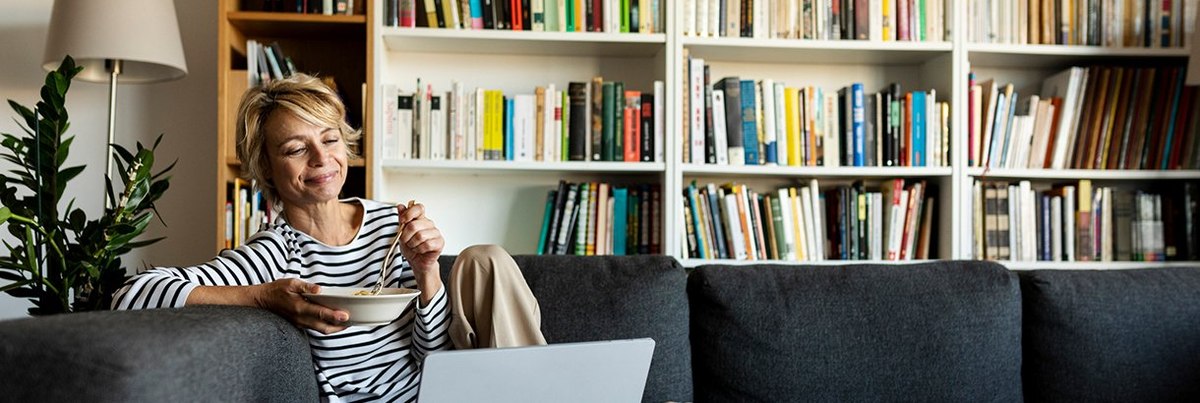
A look at the changing media landscape in the UK and Europe in 2021
The norms for media planning have changed rapidly thanks to COVID-19. Pandemic lifestyle shifts have seen many of us spending more time at home and less time taking trips outside. That’s led to some intriguing (and surprising) trends in media consumption as people have sought out news, entertainment and distraction.
These consumer changes have had major implications for media owners and advertisers, especially when it comes to where and how much to invest ad spend. There’s also uncertainty about whether the acceleration toward digital formats is permanent or if the pain for traditional media is only temporary.
In our recent panel discussion with agency and media industry leaders YouGov explored how agencies, brands and media companies can navigate the changing media landscape.
Hosted by Jules Newby – Sector Head of Media UK Europe and ROW at YouGov – and joined by Sky’s Director of Planning, Sarah Jones, and iProspect’s Chief Strategy Officer, David Grainger, our panel of media experts draw on key insights from YouGov’s new International Media Consumption Report 2021 to discuss the major impacts of COVID-19 on consumer behaviours in the UK and Europe over the past year. The webinar also focuses on our panel’s predictions for media consumption and advertising spend in a post-pandemic world and looks ahead at whether pandemic lifestyle shifts are here to stay.
The rise in TV viewing – both non-linear and linear
There has been a significant shift in TV viewing habits since the introduction of lockdowns and social distancing measures in the UK and Europe. Streaming video providers reaped the most benefits, with streaming up 8 percentage points in audience size year-over-year in Great Britain, according to YouGov data.
During the discussion, Sarah Jones from Sky observed that levels of on-demand viewing were “breaking records every week” as the pandemic progressed. “On Sky channels last year, non-linear TV outperformed linear which is a huge shift,” Jones said. “Initially, the growth of on-demand content was driven by the first lockdown, so April through June when people were spending huge amounts of time in their homes. We then saw on-demand TV climb every month, continuing to rise to the point where December [2020] saw our highest on-demand viewing on record.”
While lockdowns certainly accelerated on-demand TV viewing this year, linear TV also saw a boost in the amount of hours watched. Local news played an important role as trusted content providers for information and updates to the coronavirus pandemic. There’s also some industry optimism for live TV viewing in the form of sports and Jones notes that at Sky, “we had our highest live viewing for the Premier League, Masters, and F1 seasons last year.”
Changes in advertising due to the pandemic and the loss of out-of-home impressions
The economic crisis played out across advertising budgets last year, causing an immediate drop in ad spending when the pandemic hit the UK and Europe. Lockdowns also provoked sharp declines in out-of-home and cinema advertising, as the available audience sometimes sharply declined. But where consumer behavior has shifted, ad spend – when it did happen – adjusted quickly in response.
For brands who were able to spend on advertising, the increases in TV and streaming viewership - but also in overall digital consumption - presented opportunities to tap into the “new norm”. According to David Grainger of iProspect, “advertising demand fell away over the summer but commercial impacts [for some brands] were actually up because we’re all stuck at home engaging with in-home media.” Grainger commented, “You were looking at a scenario where if you were able to spend – and I appreciate a lot of advertisers couldn’t spend – you benefited from a nearly 30% deflation of advertisers present in the TV marketplace.”
What other trends and insights did our experts uncover in the webinar?
During the session, our experts explored a range of topics critical to understanding the rapid shifts in media consumption and ad spending. Watch the on-demand webinar for key insights into how the industry is changing, including:
- The uptick in day-time streaming during the pandemic as people embraced the flexibility of remote work and on-demand content. This further cements the success of on-demand content this year and signals another slight change in how and when people stream TV at home.
- The acceleration of e-commerce as people avoided stores and opted to shop online instead. As a result, ad spending on e-commerce platforms and social media were a major focus for those who had the budget. David Grainger notes, “This is especially apparent when it comes to social commerce with nearly every social platform having the ability to prompt you to buy straight from the feed itself.”
- Brand building and striking the right tone in adverts were complicated challenges during this period of transformation. Our experts agree that staying silent was a risk but remaining relevant and top-of-mind means companies need to take a hard look at their marketing strategies and where their audiences shifted in terms of media consumption. The new standard appears to require brands to be even more innovative and creative than before in order to stay top-of-mind.